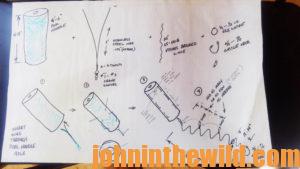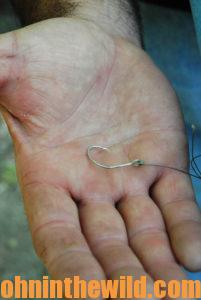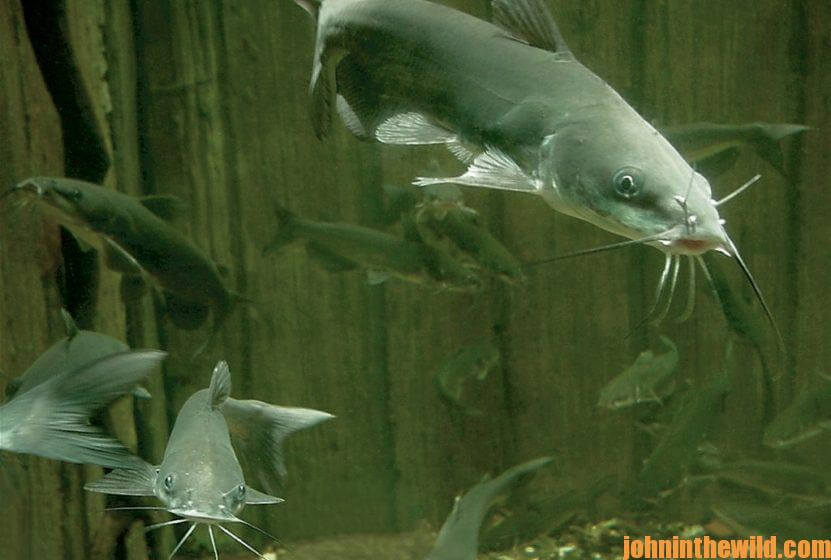Editor’s Note: Catfish are hard-fighting and delicious to eat. The equipment you need to catch cats is inexpensive and easy to find, and the ways you can catch catfish successfully are numerous. The largest catfish on record is a 9-foot long, 646-pound Mekong giant catfish caught in China.
What about Catfish:
 Although more than 1,000 kinds of catfish are found all over the world, 26 species of catfish live in the United States, ranging in size from 1 inch to the largest said to be a 315-pounder caught in the Missouri River. The North American species have barbels (whiskers) on their faces that enable catfish to find food, since catfish taste through their feelers as well as their entire bodies that have more than 100,000 food sensors on them. A catfish discovers food by fanning the bottom with its barbels and honing in on vibrations – catfish can detect high frequencies at 13,000 cycles per second – and following food scents.
Although more than 1,000 kinds of catfish are found all over the world, 26 species of catfish live in the United States, ranging in size from 1 inch to the largest said to be a 315-pounder caught in the Missouri River. The North American species have barbels (whiskers) on their faces that enable catfish to find food, since catfish taste through their feelers as well as their entire bodies that have more than 100,000 food sensors on them. A catfish discovers food by fanning the bottom with its barbels and honing in on vibrations – catfish can detect high frequencies at 13,000 cycles per second – and following food scents.
Catfish eat most anything, including fish like gizzard and threadfin shad, miniature marshmallows, homemade soured-food cooked mixtures like pineapple and rice, dry dogfood sunk in a burlap bag, wieners, chicken livers, soap, golden raisins, commercially-prepared catfish bait, suckers, mullet, freshwater mussels, hellgrammites, worms, leeches, frogs and any decaying matter.
Four main species of catfish live in North America: the bullhead, the channel, the flathead and the blue. The bullhead is one of the most widely-distributed catfish, inhabiting most of the U.S. and southern Canada. The channel catfish originally was wide-ranged from southern Canada through the Great Lakes region and the central drainage systems of the U.S. south to Mexico, as well as parts of the Atlantic Coast and all the states bordering the Gulf of Mexico. Today channel catfish also have been introduced throughout other sections of the U.S.
The flathead catfish has been introduced across the U.S. in rivers and reservoirs and has its origin in the rivers of the Mississippi Valley – the Missouri, the Ohio and Mississippi – south to Mexico. The blue catfish isn’t as abundant today as it was before the erection of power dams, but still it’s distributed in large rivers from Minnesota and Ohio southward and in the Atlantic Coastal system, with a preference for clear, swift streams flowing over bottoms of bedrock, boulders, gravel and/or sand.
Let’s take a look at some of the easiest and least-expensive do-it-yourself ways to catch catfish with materials you can find easily. Be sure to check with your local fish and wildlife section of the state’s department of conservation where you plan to fish about any regulations on the tactics used to fish for catfish to make sure they’re legal.
Why and How to Noodle for Catfish:
Anglers catch catfish using a wide variety of techniques. One of the simplest and easiest ways to catch catfish is by noodling. Gary Harlan https://www.facebook.com/cptgaryharlan/, 901-413-2650, of Tishomingo, Mississippi, is a professional catfish guide at Pickwick Lake on the border of Tennessee, Alabama and Mississippi, who fishes with noodles – round, Styrofoam floats that children and adults both use when swimming in pools, rivers and/or lakes. Noodles are productive devices to use for catfish too.
“Whether I’m fishing with youngsters or adults or a combination of both, I like to catch catfish on noodles,” Harlan explains. Although noodles come in a wide variety of sizes and lengths, Harlan prefers the jumbo noodles about 56-inches long. He cuts each brightly-colored noodle into three sections, about 18-1/2-inches long and writes his name and his cell phone number with a black permanent Sharpie on each noodle. Harlan uses a piece of 6-8 foot-long stainless-steel wire, folds the wire in half, puts a No. 1 – a No. 3 barrel swivel in the middle of the halved wire and twists the e nds of the wire six to eight times to form a loop in the middle of the wire where the barrel swivel is attached. Next he sews the wire from inside the pool noodle to its outside, so that the wire is woven from one side of the noodle to the other side, much like lacing up a tennis shoe.
nds of the wire six to eight times to form a loop in the middle of the wire where the barrel swivel is attached. Next he sews the wire from inside the pool noodle to its outside, so that the wire is woven from one side of the noodle to the other side, much like lacing up a tennis shoe.
Once both ends of the wire come out the top of the noodle, Harlan twists the two ends together, leaving about 1 to 1-1/2 inches of twisted wire. He wraps this remaining wire around itself, forces this tag end of the wire into the noodle and with his pliers taps the wire’s tag end deep into the noodle to make it lay flat on the noodle’s top. He attaches 20 feet of 65-pound-test braided line to the barrel swivel at the bottom of the noodle. Next he attaches snap swivels every 5 feet down the 20 feet of line. Then he can fish from 5-feet to 20-feet deep by just adding a hook on the snap swivel at the  water depth he wants to fish. He slides a 1/4- to a 1/2-ounce egg sinker on the bottom of the line and attaches a No. 2/0 – No. 3/0 circle hook to catch eating-size catfish and up to a No 7/0 hook for larger catfish. (see illustration)
water depth he wants to fish. He slides a 1/4- to a 1/2-ounce egg sinker on the bottom of the line and attaches a No. 2/0 – No. 3/0 circle hook to catch eating-size catfish and up to a No 7/0 hook for larger catfish. (see illustration)
“I like circle hooks because when the catfish takes the bait, the circle hook will catch that fish,” Harlan says. “Then I rarely if ever miss a catfish that takes my bait. Rigging this way, I can shorten my line to as little as 3 feet, if I want to fish shallow water in the summertime at night, or make it as deep as 20 feet, if I’m fishing during the daytime.”
Harlan prefers to fish with either freshly-caught cut shad or 3-4-inch shad minnows cut in half for bait. “In an average day of noodle fishing, my party and I may catch as few as 50 pounds of catfish up to or more than 100 pounds of catfish, if the fish are biting.”
To learn more about catching catfish, go to John E. Phillips’s book “Catfish Like a Pro” http://amzn.to/W900eu
catfish, go to John E. Phillips’s book “Catfish Like a Pro” http://amzn.to/W900eu
Tomorrow: How to Jug for Catfish










